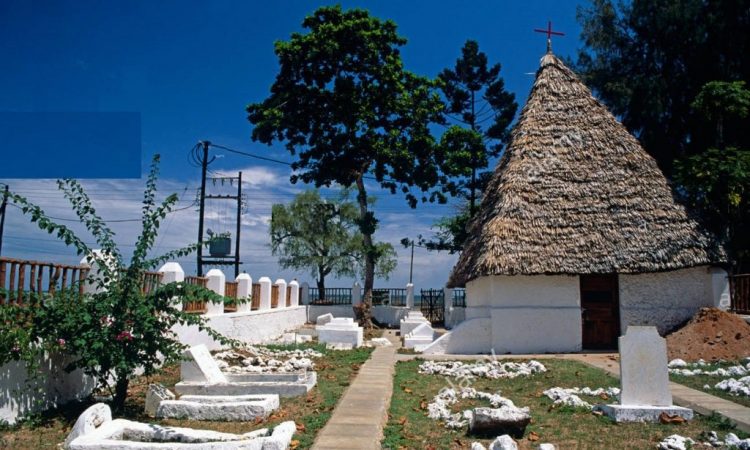
The Portuguese presence in Malindi began with the arrival of Vasco da Gama in 1498. On his second voyage to India, he left a group of solders in Malindi and a Chapel built in the style of that of the Navigator`s at Sagres in Portugal and a Portuguese` factory ‘or trading base which included store houses, barracks, residences and offices. The Chapel endured for nearly a century until the Portuguese withdrew to Mombasa in 1593. The settlement may have housed around sixty Christians. For such a community, the Chapel and graveyard seem to be modest in size, but possibly this was deliberate. When the Chapel was built, Islamic worship was paramount and there were 17 Mosques, an indication of the size of this splendid town.
In 1542, the Catholic Missionary Francis Xavier (later St. Francis Xavier) while enroute to Goa, landed in Malindi to bury a seaman in the Chapel graveyard. Francis Xavier was born in 1506 at Xavero castle near Sanguesa on the Aragon River, south of the Pyrenees in the medieval Kingdom of Navarre, later incorporated with Spain. He founded the Society of Jesuits in 1534 while in Rome. He died in Goa and was created a Saint soon after. St. Francis`s name is always associated with the Chapel and Catholics in Malindi Hold their Holy Mass here during Easter and every first Sunday of December to celebrate St. Francis Xavier family day.
After the Portuguese departed in 1593, the history of chapel is obscure. During the 17th and 18th centuries, Malindi declined and nearly disappeared and at that period it was described as ruined and deserted. The Chapel itself may have been a ruin at various times and no history can be ascribed to it for nearly 300 years. The graveyard come to be used again when J.Bell Smith was buried there in 1894. Bell Smith was the first resident administrator for the Imperial British East Africa Company which occupied Malindi between 1890 and 1895. Thereafter, the graveyard was used for burials occasionally until 1958. This graveyard was once shaded by large trees and may have been larger than is seen today. It is recorded that a Baobab tree was planted on the Portuguese graveyard, so perhaps the large tree opposite the chapel was once in the Chapel compound.
This Chapel is said to be the oldest Christian church in East Africa and was declared a gazetted monument in 1935. In 1993 the Kenyan branch of Society of Jesuits provided funds to the newly formed Malindi Museum Society (MMS) to assist National Museums of Kenya to restore the chapel and graveyard. Later the local branch of the Kenya Horticultural Society (KHS) restored the garden. The Chapel is now cared for and maintained by the National Museums of Kenya assisted by the MMS and KHS.
VISIT THE FIRST CHRISTIAN CHURCH IN EAST AFRICA, BUILT IN THE 1490s, EXPERIENCE AND APPRICIATE EARLY CHRISTIANITY.
